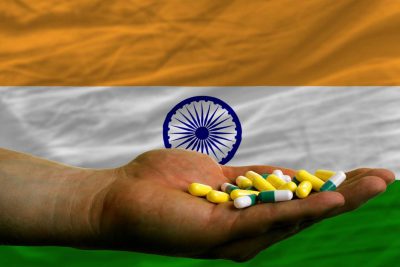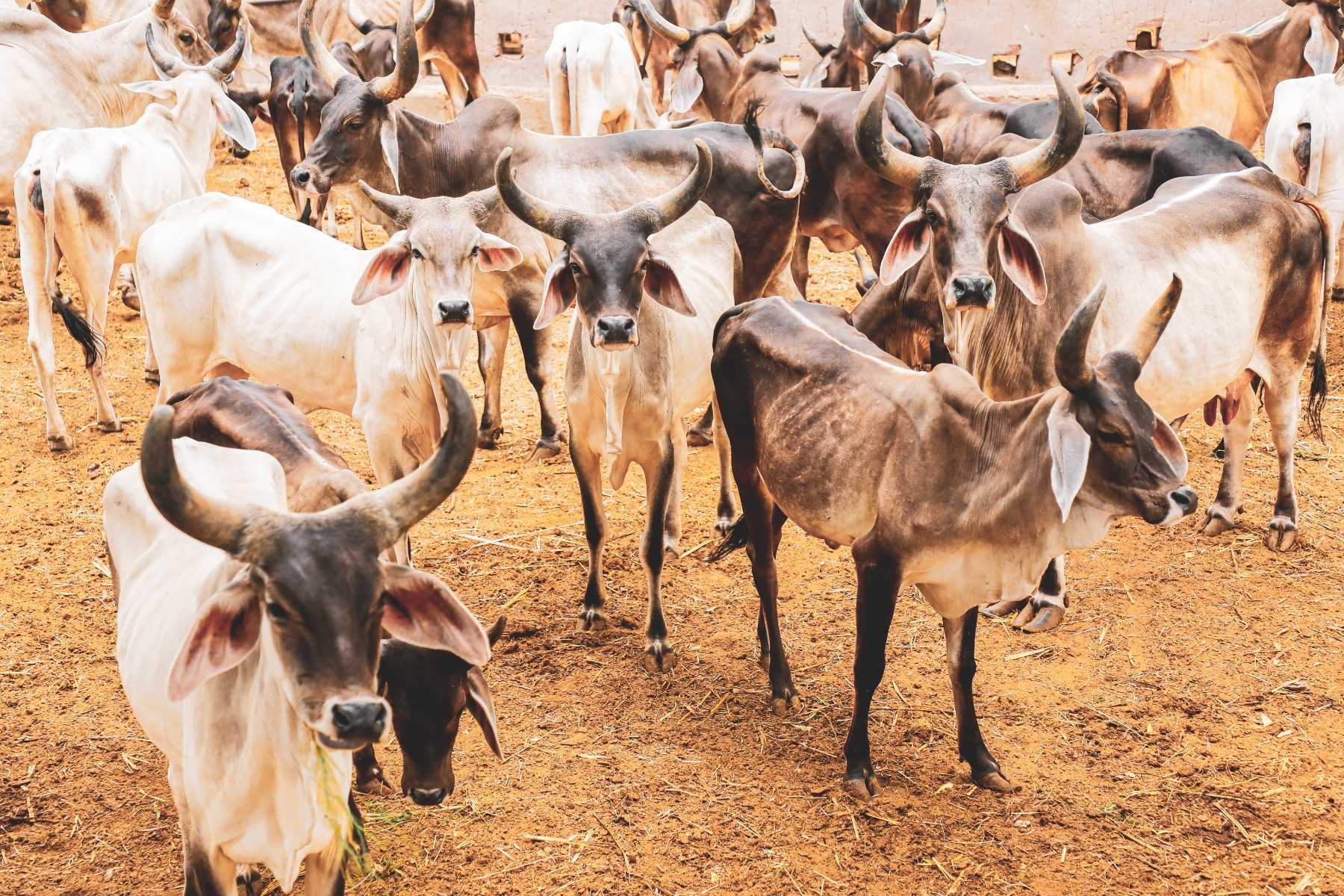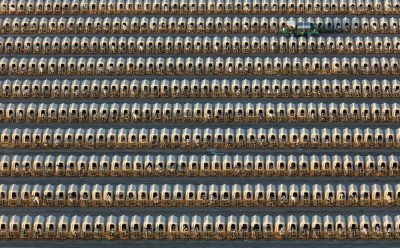India has one of the highest rates of resistance to antibiotics and this should come as no surprise. The level of resistance is directly connected to the levels of consumption and India not only tops the world in antibiotic consumption per person, it is also the world’s fourth largest user of antimicrobials in animals.
Overuse of antibiotics in both people and animals is reckless. It is already killing 700,000 people around the world each year. And there is one thing we know for certain from Covid-19: it does not matter where a pathogen emerges; in today’s world, it can affect almost everyone on the planet in a matter of weeks.
We must reduce the obvious overuse of antibiotics in people but we must also tackle the huge but hidden use – the vast amount of antibiotics given to animals inside India’s farms.
What are antibiotics?
Antibiotics are medicines that are used to treat some types of bacterial infection. They were discovered just over 100 years ago and miraculously changed healthcare and human survival rates worldwide. Before then, simple infections killed us, and basic surgery was fraught with danger.
Perhaps because none of us remember a time before antibiotics, we have become complacent. We take them for illnesses that are not serious, we take them for illnesses they cannot treat, and we feed them wholesale to farmed animals to try to keep them alive long enough to slaughter them, and to make them grow faster.
This imprudent overuse endangers all our lives.
What is antibiotic resistance?
The main problem with overusing antibiotics is not that we ingest them, nor is it the case that the drugs stop working. The problem is that if just a few microbes have the genes to resist them, things can go badly wrong, and fast. Those bacteria survive the antibiotics, multiply and pass on their resistance to an ever-growing number of bacteria. Segments of DNA that confer this drug resistance can move from host to host, and from species to species. They spread and mutate, and diseases emerge that cannot be controlled by antibiotics – including common diseases like MRSA, and certain strains of E coli and salmonella.
Why are antibiotics given to farmed animals?
There are three reasons why antibiotics are administered to farmed animals:
- To treat a bacterial infection
- To try to prevent disease
- To make animals grow faster for commercial purposes
It is understandable that farmers would want to treat a bacterial infection in their animals, and few people would criticise modest use when the need was great. But antibiotics are not just given where needed, they are fed in vast amounts to farmed animals to try and prevent disease and to make the animals grow quicker than they otherwise would.
Of course, antibiotics would not be used in such vast quantities if animals were taken out of the filthy, cramped factory farms, and away from the unhygienic, stressful situations they are kept in. Then, they would not get so sick and would not need drugs. Treating animals poorly is not only bad for them, it is bad for us, too.
How many antibiotics are given to farmed animals in India?
No one knows. India does not have a surveillance system that accounts for the use of antibiotics in farmed animals. But if the data from the USA are indicative, then it is likely that a large proportion of the country’s total antibiotic consumption may actually be used in animal agriculture. There, almost 80% of all antibiotics sold or distributed are given to farmed animals.
What we do know is that in 2012, India manufactured about a third of the total antibiotics produced globally, and we can get a sense of just how widespread use is within India by the tests done on animal products. Antibiotic residues have been found in many animal products, including chicken meat and milk. In one study, 40 percent of chicken samples tested in the Delhi National Capital Region contained residues of one or more antibiotics. The researchers recommended banning the use of antibiotics to promote growth and incentivising organic farming to further reduce use. But what they didn’t say was this obvious truth: the most effective way to make the biggest reduction in the use of antibiotics is to stop farming and eating animals.
Emerging infectious diseases
Three quarters of all emerging infectious diseases come from animals. When we damage natural ecosystems – for forestry, hunting, and to make way for farming – we bring wild animals into ever closer contact with people, which means closer contact with the pathogens they host.
Similarly, when we lock animals up inside filthy farms, forcibly impregnate them, take away their young, tie them up, prevent them from behaving naturally, inflict mutilations upon them, and deny them a life worth living, we create the perfect environment for new diseases to emerge. It is little wonder that pandemics experts all around the world keep a close eye on factory farms.
Of course, if people did not eat meat, milk and eggs, these farms – and the dangers they present – would not exist.
How big a danger is antibiotic resistance in India?
The World Health Organization states that antibiotic resistance is “a major public health concern in India” and that resistance is growing. Worryingly, resistance is not confined to the older and more frequently used classes of drugs but there has also been a rapid increase in resistance to the newer, more expensive drugs, which are often used as a last resort when treating infections.
India is among the nations with the highest burden of bacterial infections. An estimated 410,000 children aged 5 years or less die from pneumonia in India annually. This accounts for almost 25 percent of all child deaths in India.
Doctors are already well aware of this situation. “This is not rare anymore,” said Dr Sandeep Nayar, director and head, Centre for Chest and Respiratory Diseases, BLK hospital. “We receive patients with high levels of resistance to antibiotics. Some respond to only last-resort antibiotics; others do not. We end up losing many patients.”
It’s not just pneumonia, of course. Drug-resistant tuberculosis is a grave problem in India today, for example, but drug resistance across a whole range of illnesses is devastatingly common. One recent study found that 70 percent of 207 individuals had antibiotic resistant bacteria in their stools. In fact, study after study shows that antibiotic resistance in India is rising, and this means things will only worsen unless action is taken immediately, and by all of us.
How can we protect ourselves?
We should take antibiotics only for a bacterial infection and only when truly necessary. Antibiotics don’t work against viruses or other pathogens and using them this way can lead to antibiotic-resistant bacteria emerging. If we do take them, we must finish the course. Stopping partway through allows the bacteria that were not yet killed to proliferate and to pass on their resistance. And we can follow good hygiene practices to prevent bacterial infections from spreading.
That will help but it is not even half the battle. We must tackle their use in agriculture. We must stop wasting these precious drugs by feeding them to farmed animals, and that means we need to stop farming animals.
And given how many bacterial diseases are caused by eating animal products – including E. Coli, Salmonella, Shigella, Staphylococcus aureus, Listeria, Campylobacter, Clostridium perfringens, and Vibrio gastroenteritis – we can play our part by not eating these products.
Gourds do not need antibiotics!
The foods we choose to eat have a much bigger impact than we often recognise. When we choose to eat meat, dairy and eggs, we are supporting systems that cause suffering to animals, damage the environment and also create diseases and antibiotic resistance that already kill hundreds of thousands of Indians every year, and will only get worse.
But vegetables do not need antibiotics to survive and grow!
When we choose to eat plants, we remove the risk of personally suffering from many bacterial infections while also reducing our contribution to the growth of antibiotic resistance. And, we also remove the risk of allowing new viruses to emerge from farms and spread as pandemics around the world – diseases like avian flu and swine flu. Plus, plant-based meals are better for us, reducing our own risk of heart disease, type 2 diabetes and other diseases.
We can protect ourselves and the people we love in many ways simply by choosing to eat plant-based foods.
Find out more with our Vegan Starter Kit




